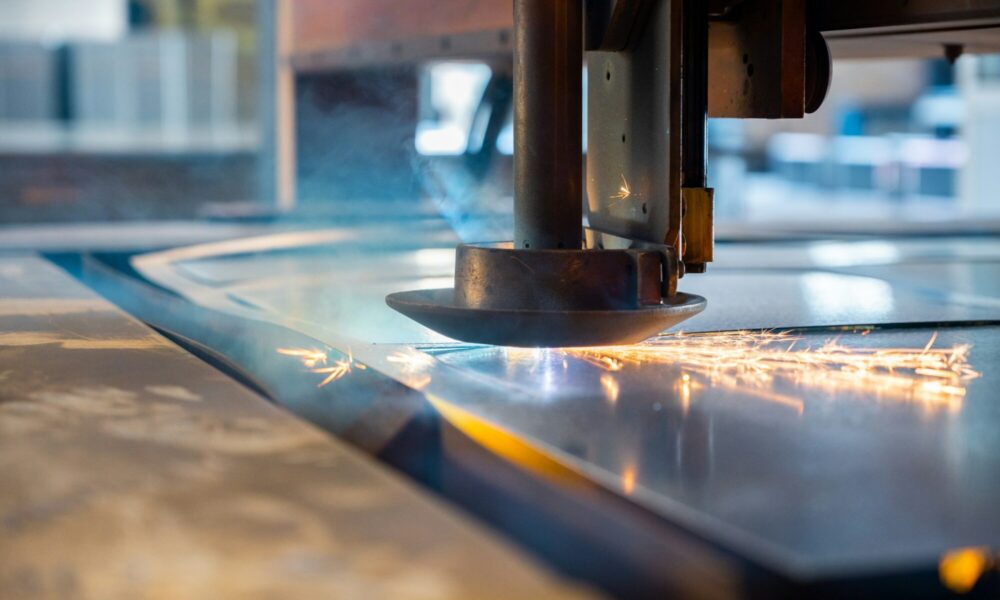Why OEMs Rely on Professional Sheet Metal Fabrication Services

I’ve been at Baoxuan Sheet Metal Processing Factory for more than a decade now. Seen more bent parts, weld burns, and powder coat reworks than I care to count. And if you ask me why OEMs rely on professional sheet metal fabrication services, the answer isn’t just one thing. It’s a messy mix of precision, deadlines, headaches, and trust. I’ll try to explain it the way we talk over tea after a long shift — not fancy, but real.
Sheet Metal Fabrication and the OEM Mindset
For an OEM, the stakes are high. They’re not just making a bracket for fun — they’re putting their name on an entire system. One loose housing or a warped cover, and suddenly their medical machine, telecom rack, or EV charging box gets delayed in the field. I’ve watched this happen.
One European client had sourced enclosures from a small garage shop. Looked fine on the surface. But when it came to sheet metal assembly, half the screw holes didn’t line up with their electronics. They came to Baoxuan in a panic. We re-cut, re-bent, and jigged the parts, and only then did the line keep moving. That’s why OEMs eventually figure out: sheet metal fabrication isn’t just about cutting and bending, it’s about system reliability.
And that, in short, is why OEMs keep coming back for sheet metal fabrication done right
CNC Sheet Metal Bending and Accuracy Headaches
Now, CNC sheet metal bending. Folks outside assume it’s just punch in the angle, press the pedal, done. Eh, not so simple. Springback, tool radius, grain direction — each can ruin your day.
We had a batch of 5052 aluminum panels, telecom gear again. Drawing asked for 90° ±0.2°. On paper easy. In practice, the grain ran wrong way, springback was larger than expected, and suddenly we had 30% scrap. I still remember the production manager’s face — not pretty.
So when OEMs say “we need consistency,” they don’t mean 90° more or less. They mean every panel must stack, must assemble, must pass QC. That’s why they rely on professional CNC sheet metal bending, because a one-degree miss in the shop turns into a failed assembly at their factory. And that costs way more than the part itself.
Sheet Metal Assembly Is Where Drawings Meet Physics
Here’s a truth: drawings are flat, reality is stubborn. Sheet metal assembly is where the pretty CAD views start fighting physics.
We built stainless carts for a medical OEM. Laser cut, bent, looked perfect. Then welding came. Thin gauge stainless pulled 2 mm out of square. The client’s drawer units wouldn’t slide. Boom — rework city.
That’s why OEM sheet metal fabrication isn’t about the single process, it’s about knowing the traps: welding distortion, rivet creep, adhesive failure after powder coat. We’ve made those mistakes so OEMs don’t have to. And believe me, once you’ve sat through an entire shift grinding down welds because a frame twisted, you learn quick that sheet metal fabrication is all about assembly discipline.
Comparing OEM Sheet Metal Fabrication to Alternatives
Let me be blunt. Sometimes OEMs ask, “Why not just machine it?” Fair question. We do both, so here’s the comparison:
| Solution | Pros | Cons |
| OEM Sheet Metal Fabrication | Lightweight, fast turnaround, lower material cost, scalable for batches, flexible design | Limited material thickness, tolerances looser than machining, risk of warping |
| Machined Components | High precision, excellent mechanical properties, complex geometry possible | Expensive for large parts, long lead times, high waste (chips) |
| Hybrid (Fabrication + Machining) | Best of both worlds — sheet body plus machined faces or holes | More planning, supplier coordination harder, higher process control needed |
Most OEMs pick hybrid. Example: an enclosure body cut and bent, then machine the mounting surfaces to ±0.02 mm. That’s efficient, precise, and manufacturable. And this blend is why professional sheet metal fabrication remains the core choice for OEMs.
Why OEMs Don’t Gamble with Quality
Look, when an OEM puts their product out there, they’re gambling with brand reputation. A scratched panel or bad weld isn’t just ugly — it’s warranty claims.
We once supplied stainless housings to an overseas telecom OEM. They specified brushed finish, all four sides must match direction. Seems cosmetic. But when the panels were mismatched, their marketing team rejected the batch. We re-finished 200 housings. Painful lesson.
Since then, Baoxuanmetal added stricter checkpoints:
- Flatness inspection after laser cut.
- Angle check immediately after bending.
- Trial sheet metal assemblybefore powder coating.
Some young engineers think it’s overkill. I just tell them: rework costs more than inspection. That’s the reality of OEM sheet metal fabrication.
Industry Data Backs the Shift
It’s not just shop talk. According to SME (Society of Manufacturing Engineers, 2022), over 60% of U.S. manufacturers report moving from mass production to custom or OEM-focused sheet metal work source: And China Sheet Metal Industry Association (2021) noted a 35% growth in custom enclosures and housings over three years source:
The data matches what I see daily — OEMs want specialized, high-accuracy, fast-turnaround work. That’s sheet metal fabrication, plain and simple.
FAQs on OEM Sheet Metal Fabrication
Q1. What tolerances can sheet metal fabrication usually achieve?
±0.1 mm cutting, ±0.3° bending, tighter with fixtures.
Q2. Is CNC machining always more accurate than fabrication?
Yes, but it’s slower and costlier. Hybrid is often smarter.
Q3. What’s the biggest risk in sheet metal assembly?
Welding distortion, hole mismatch, and coatings blocking fits.
Q4. How can OEMs save cost without losing quality?
Standardize sheet thickness, avoid over-tight tolerances, and design for easy bending and assembly.
Q5. Why choose a professional shop like Baoxuan?
Because experience reduces mistakes — and in OEM projects, mistakes cost more than the parts themselves.
Closing Thought
I’ve bent more panels and reworked more welds than I’d care to count. And if there’s one thing I’ve learned: sheet metal fabrication isn’t just a process, it’s a whole ecosystem. OEMs don’t pay for cuts and bends — they pay for reliability, for the peace of mind that comes from knowing a batch of custom metal parts won’t fail at assembly.
At Baoxuan Precision Manufacturing, we gripe sometimes, sure, but we never stop learning. That’s exactly why OEMs continue to trust professional sheet metal fabrication services.
Got a tricky drawing, or just feel like debating bending angles? Leave a comment or drop me a line. Always happy to talk shop.

Source: Why OEMs Rely on Professional Sheet Metal Fabrication Services



